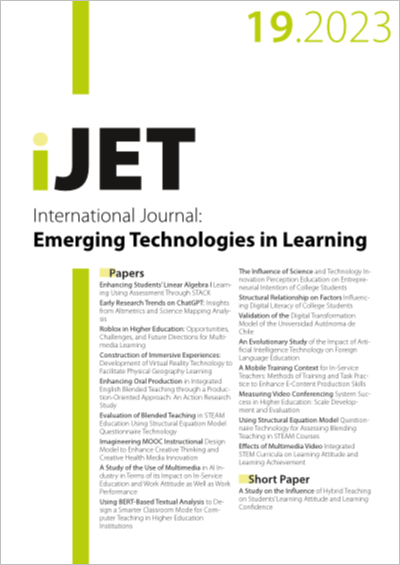Measuring Video Conferencing System Success in Higher Education: Scale Development and Evaluation
DOI:
https://doi.org/10.3991/ijet.v18i19.42225Keywords:
video conferencing systems, BigBlueButton, e-learning, survey, PLS-SEM, IS success model, usability, user experience, COVID-19 pandemicAbstract
The COVID-19 pandemic has placed great importance on video conferencing tools in delivering instruction at higher education institutions (HEIs). Increased interest in video conferencing tools for hybrid and fully online teaching is also expected in the post-pandemic period. The main focus of this paper is on the analysis of the BigBlueButton video conferencing tool by using survey data collected from students (N = 175) at a HEI at the beginning of the COVID-19 pandemic. The assessment scales for data collection in the survey were based on the DeLone and McLean Information Systems Success Model (D&M ISSM), as well as on the concepts of usability (US), cognitive involvement (CI), and design appeal (DA). The analysis of the assessment scales indicated their good internal consistency and reliability (using the Cronbach alpha and other indicators). A correlation analysis and factor analysis were performed to assist in developing a structural model of the relations between independent variables; system quality (SYSQ), information quality (INFQ), service quality (SERQ), US, CI, and DA; and the dependent variable intention to use (IU) the BigBlueButton video conferencing system. A structural model was developed and confirmed with the use of partial least squares structural equation modeling (PLS-SEM), and the explanatory power (R2 value) of this model was .507 regarding the dependent variable IU the BigBlueButton system.
Downloads
Published
How to Cite
Issue
Section
License
Copyright (c) 2023 Goran Bubas, Antonela Čižmešija

This work is licensed under a Creative Commons Attribution 4.0 International License.



